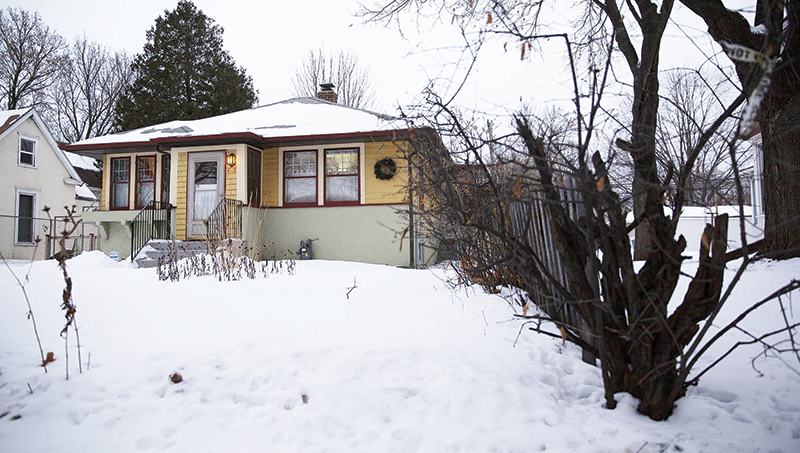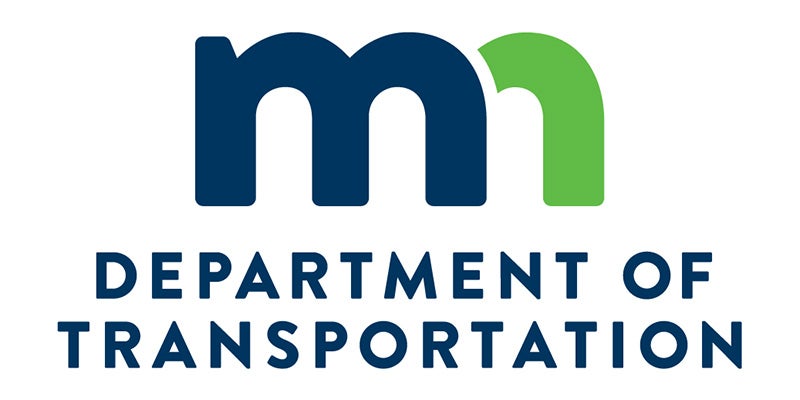Advocates eye community land trusts to increase access to homeownership
Published 2:01 am Thursday, February 6, 2020

- While Mary Christianson owns her home in North Minneapolis, City of Lakes Community Land Trust owns the land. This model ensures that the property remains affordable. Christine T. Nguyen/MPR News
By Martin Moylan
MPR News/90.1 FM
Most people who own a home also own the land under it. But that’s not the case with an ownership model that has put hundreds of low-income Minnesotans into homes — and could provide a path to homeownership for thousands more.
Nonprofit community land trusts offer an untraditional model for homeownership, one in which a trust owns the land and homeowners own the home. The arrangement provides a substantial subsidy that sticks with the property from owner to owner, typically keeping the selling price of a home tens of thousands of dollars below what it would fetch on the open market.
Mary Christianson said she would not have her compact, one-story, century-old home in the Webber-Camden neighborhood of north Minneapolis without a land trust.
Christianson always worked for nonprofits, and when she retired, she found Social Security and her earnings from teaching tai chi part time weren’t enough to cover her mortgage payment.
So, she made her home part of the City of Lakes Community Land Trust.
The land trusts invest in homes and underwrite construction and repair expenses, aiming to cut housing costs for current and future owners, like Christianson.
“Since they brought the affordability subsidy, my mortgage payment ended up being cut in half,” she said. “And now I own the house and the land trust owns the land. And I pay a $20 lease fee.”
The subsidy cut Christianson’s mortgage by $40,000. In addition, the land trust paid for new front steps, a new furnace and other improvements.
Scott Fremont is also in his house because of the land trust. He’s a long-time professional musician who recently decided it was time to get an MBA. He’s heard some skepticism about the community land trust model. For one thing, Fremont gets only a portion of any price gain if the house is sold. But he’s sure he did the right thing.
“There are a few parties who say, ‘Oh my God. How can you do this? They own the land. You’re forever indebted to them.’ And I say, ‘Well, sure. But I own a house,’” he said.
The land trust took a $60,000 equity stake in Fremont’s south Minneapolis house and provided $25,000 in fix-up funds.
The City of Lakes Community Land Trust is one of 13 such organizations in the Twin Cities, Rochester, Duluth, St. Cloud and other parts of Minnesota. Combined they have 1,250 homes in their portfolios. They raise the money they invest in homes from public and private sources, competing for funds with other nonprofit and for-profit entities trying to increase the supply of affordable housing.
“Dollar-for-dollar, investing in a community land trust generates greater public return on investment than any other affordable housing model out there,” said Jeff Washburne, director of the City of Lakes Community Land Trust, which includes 297 homes.
Washburne argues land trusts should get a bigger share of the government financial support for affordable housing efforts, given how they can keep homes affordable long term, even as values rise. That’s not the case with many housing projects and programs that get big government subsidies or tax breaks. A tax credit program, for instance, may only assure apartments remain affordable for 30 years.
Most households served by Washburne’s organization make between $25,000 and $50,000 a year. As gentrification, rising property taxes and other factors push up housing costs in Minneapolis, Washburne said it’s becoming tougher for low-income people to buy a home.
“If things continue the way they are in Minneapolis, low-income households won’t achieve homeownership without intervention,” he said. “A couple of years ago, people could still find homes in certain parts of town and get into homeownership. That’s increasingly not possible.”
Two Rivers Community Land Trust, which serves Washington County, has 57 homes in its portfolio. It’s looking to add homes valued at $240,000 or less and make them available to qualified buyers for about $180,000. That’s a challenge in a county where the median home sale price has been about $320,000.
“Prices in the county are going up and up and up and affordability is diminishing,” said Sherry Timmermann Goodpaster, the nonprofit’s executive director.”The land trust is a great way to integrate affordable housing into the community, so you have a more diverse mix of housing in a neighborhood.”
Most people served by Two Rivers earn 55 to 75 percent of the area median income. That works out to about $55,000 to $75,000 for a family of four.
“They have good-paying jobs but not enough to be able to buy a house in the county,” she said.
The Carver County Land Trust said it has helped young families trying to handle hefty mortgages payments and high child care costs. They turn to the land trust to get into a home while one parent works and the other stays at home to care for children until they’re ready for school full time.
“We see that other person going back to work and then we see them pass on that land trust home to another family,” said Brenda Lano, who administers Carver County Community Land Trust.
Lano said land trusts can get people into homes worth more than they could afford through other options.
“If I were buying in the traditional market with my $150,000 [mortgage], I would be buying probably a $155,000 home,” she said. “But when you’re looking at a land trust home with that $150,000, you’re probably getting into a home that’s worth $210,000.”
One Roof Community Housing in Duluth has 300 land trust homes, the most in the state. Most of the homes have sold at least once in the past two decades.
“We’ve been able to help almost 500 families buy homes through the land trust program,” said land trust director Jim Philbin. “The discount [in purchase price] may be anywhere from $20,000 to $50,000 below market value.”
Minnesota land trusts hope to get funding to help 3,000 more working families become homeowners over the next decade. Nationwide, there are more than 220 community land trusts, with about 15,000 homes.
“It’s taking a while for people to catch on to the fact that this is a model that makes a lot of sense and can actually deliver what it promises,” said Emily Thaden, director of national policy and sector strategy for Grounded Solutions Network, an affordable housing advocacy group based in Portland, Oregon.
Thaden said Democratic presidential candidate Bernie Sanders has proposed $50 billion for community land trust development and growth, raising awareness for the model.
“I do think that we are beginning to gain some traction, but it’s not enough,” she said.
Thaden said land trust homes allow people to avoid over-burdening themselves to pay for a house.
“Many homeowners don’t want to be spending anywhere from 35 to 45 percent of their income on housing,” she said. “They need to have a buffer. Families will first buy a community land trust house, and then they will end up moving on and buying something in the private market because they were able to build wealth.”
Land trusts are not the only path to homeownership for low-income people.
“There are myriad affordable lending programs out there. What’s most important is that people understand all the options,” said Julie Gugin, president of the Minnesota Homeownership Center, which counsels low-income households about buying and owning a home.
What’s best for someone depends on personal finances and circumstances. Every option has its pros and cons, including the land trust model.
A community land trust can drastically reduce a buyer’s costs and get someone into a bigger, more desirable or better-located home. But when there’s a sale, it must be at a price below appraised value to a qualified low-income buyer. And homeowners get just a portion of any gain in the value of the home.
In contrast, people who can buy homes through other avenues may pocket all the gain from an increase in home value, coming out much farther ahead financially.
But other home-buying programs don’t provide the long-term assurance that homes will stay affordable over the years. For people like Christianson, the retired north Minneapolis homeowner, that community and social payoff really matters.
“That affordability subsidy doesn’t belong to me. It belongs to the house,” she said. “So, the next income-qualified person who wants to purchase the house and be a part of the land trust can afford to do that.”


